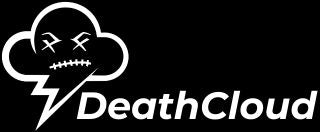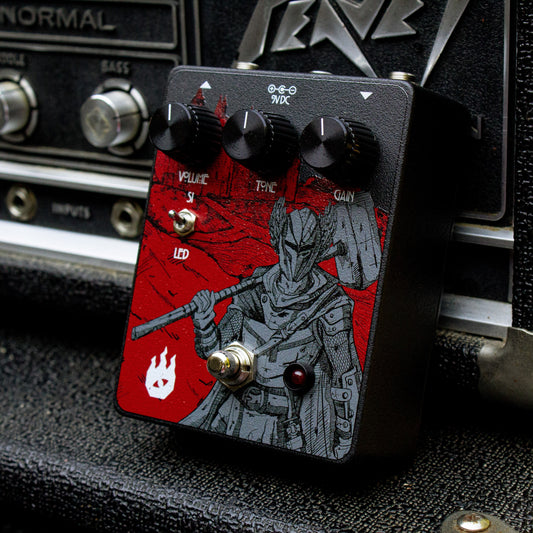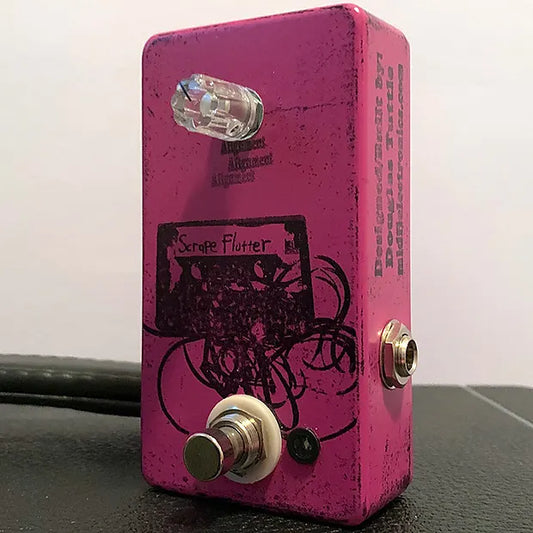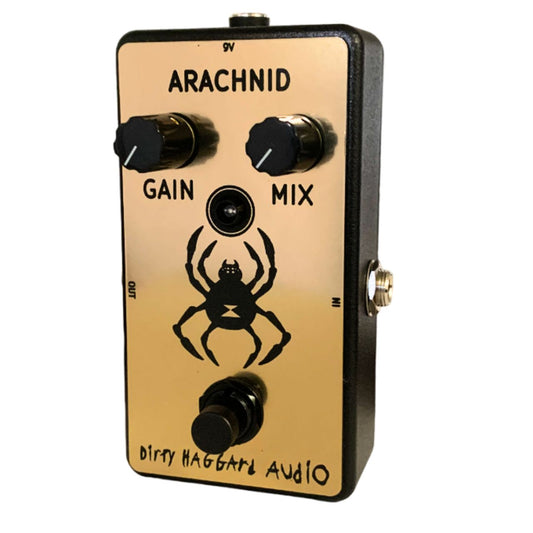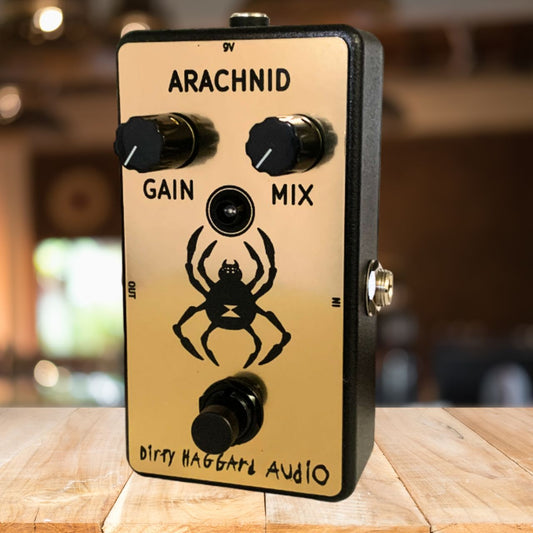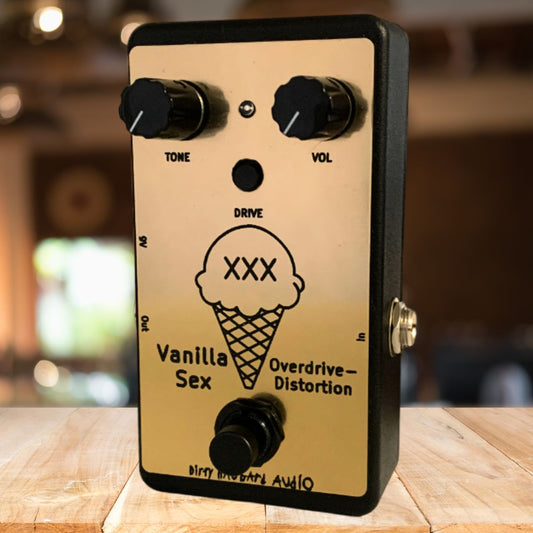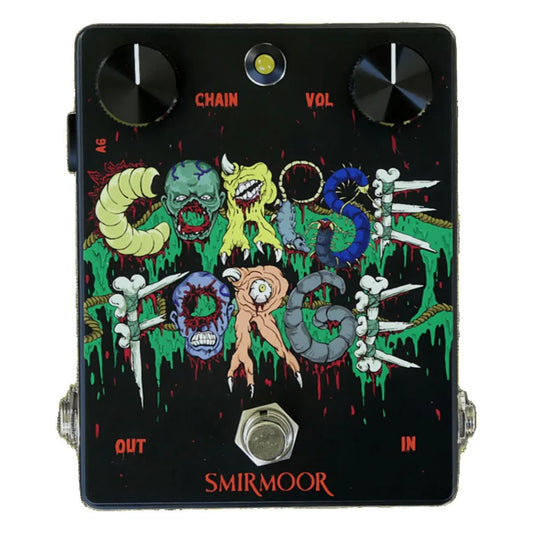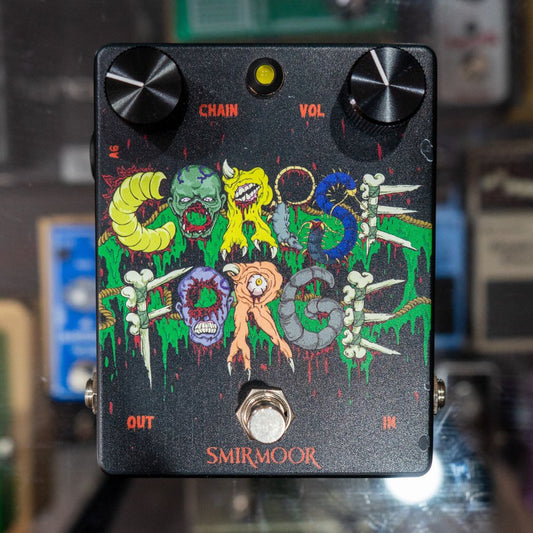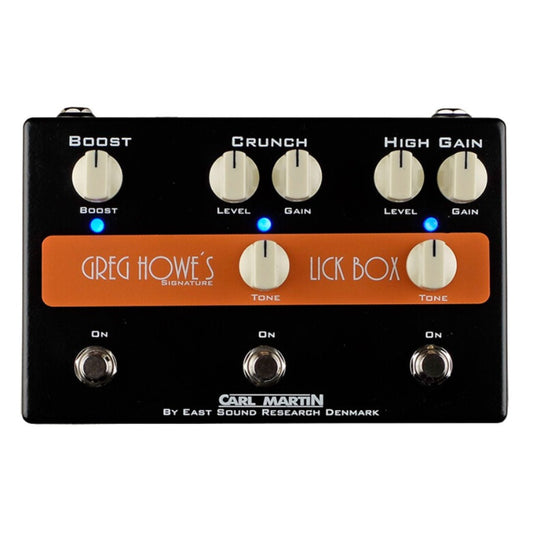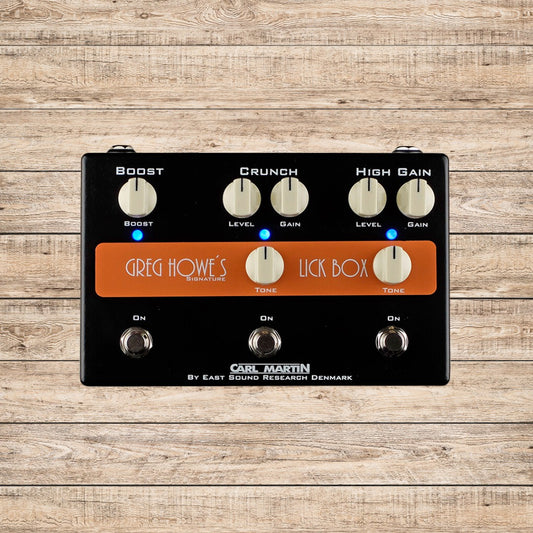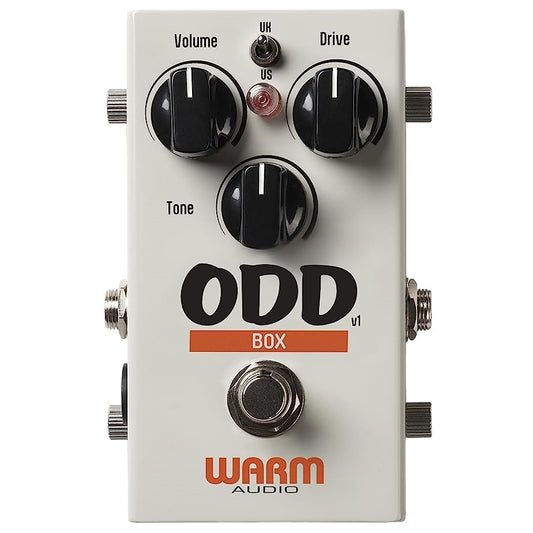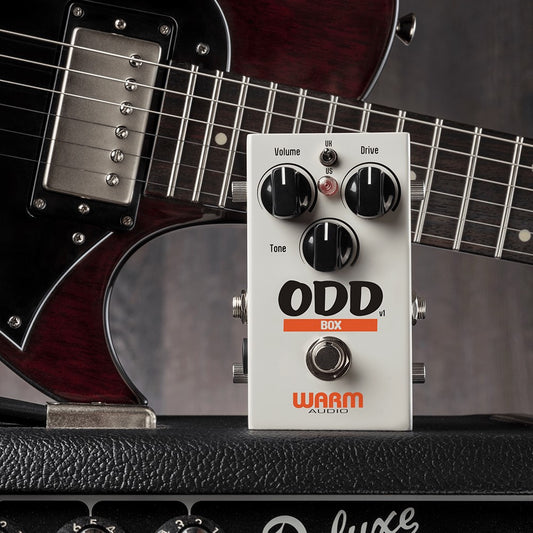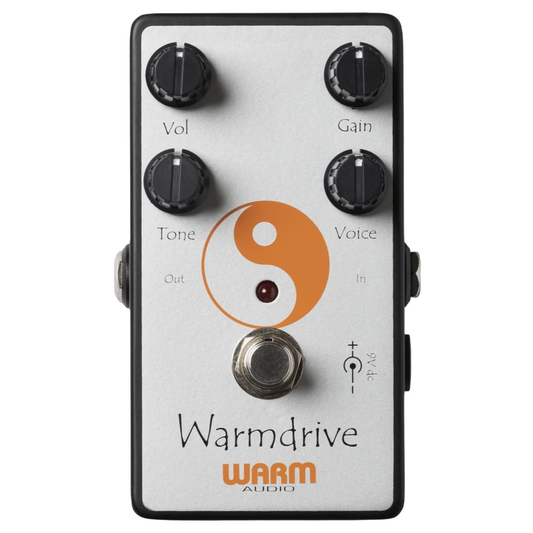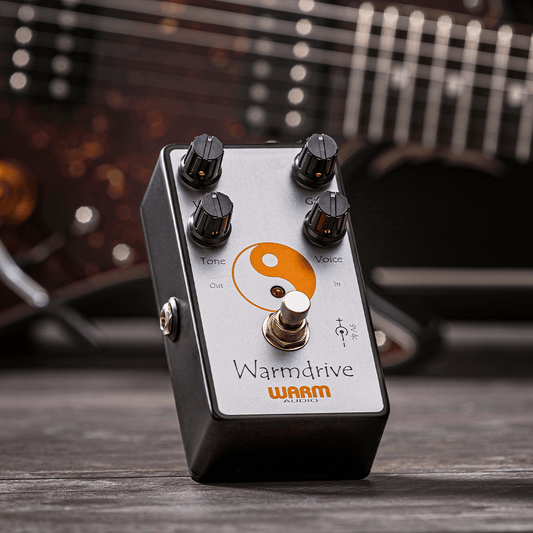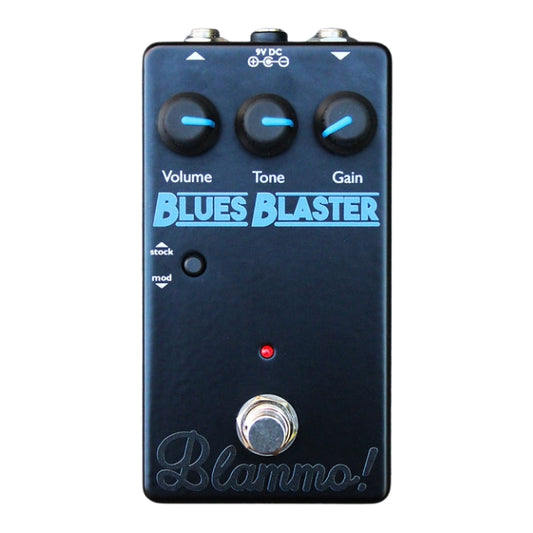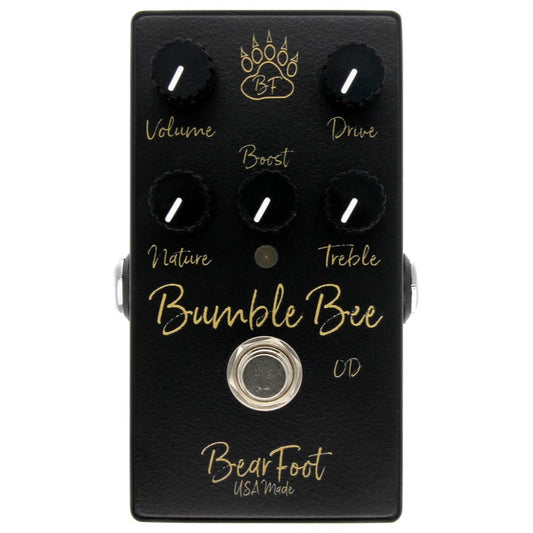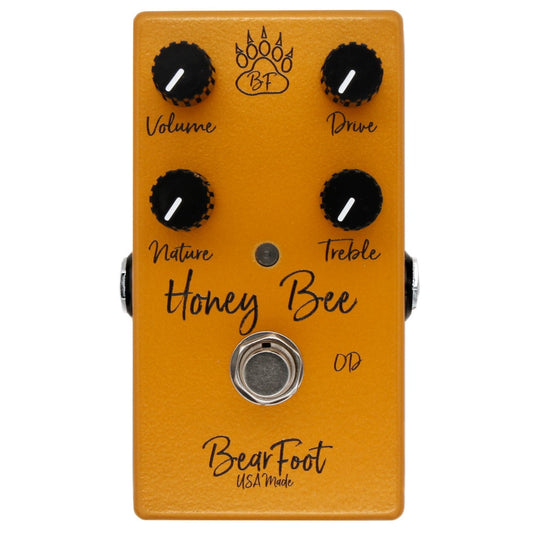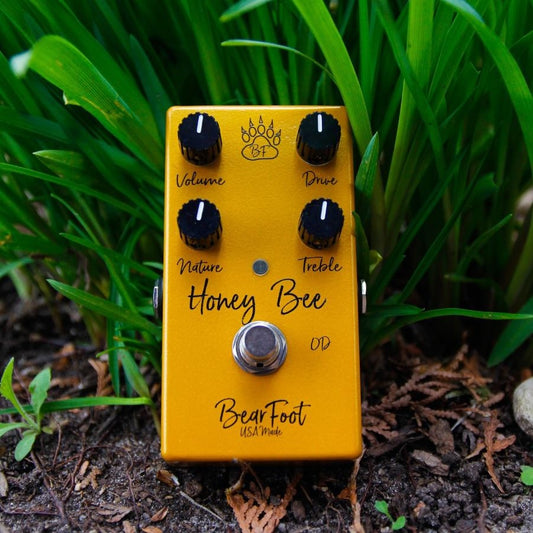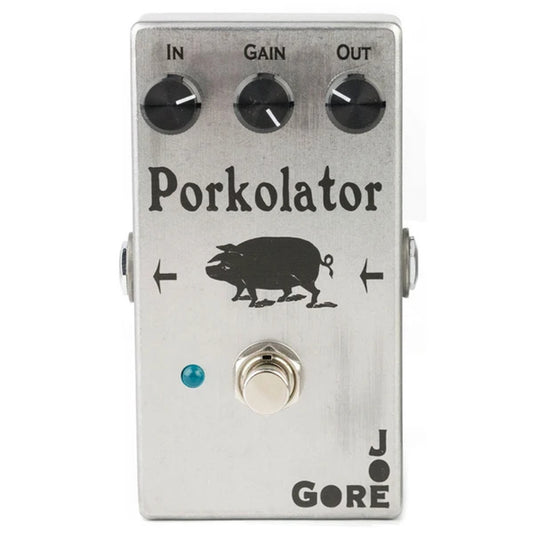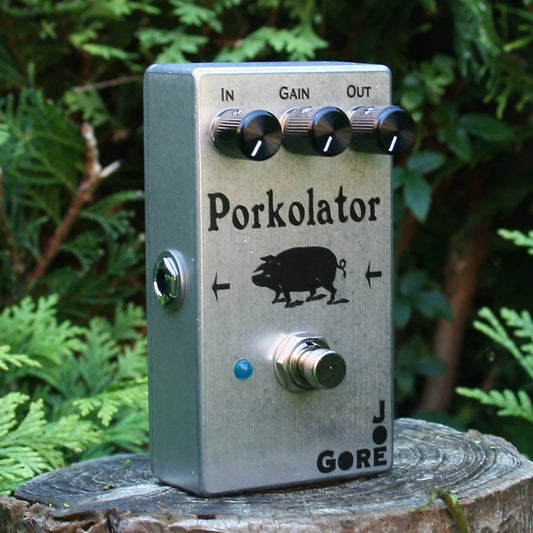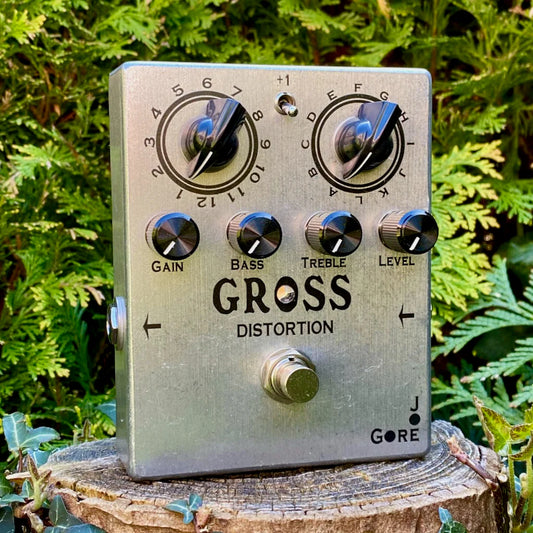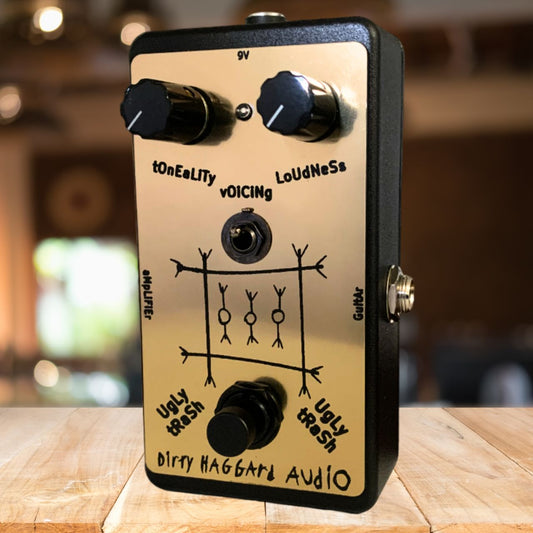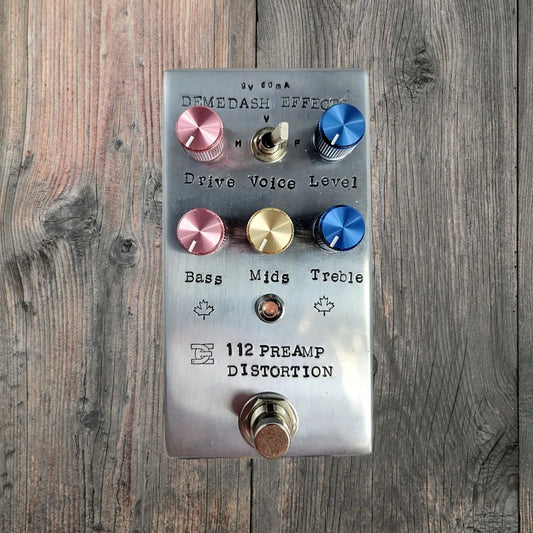Distortion Pedals
-
Evil Eye FX Paladin Pedal V2
No reviewsRegular price $149.00Regular priceUnit price / per -
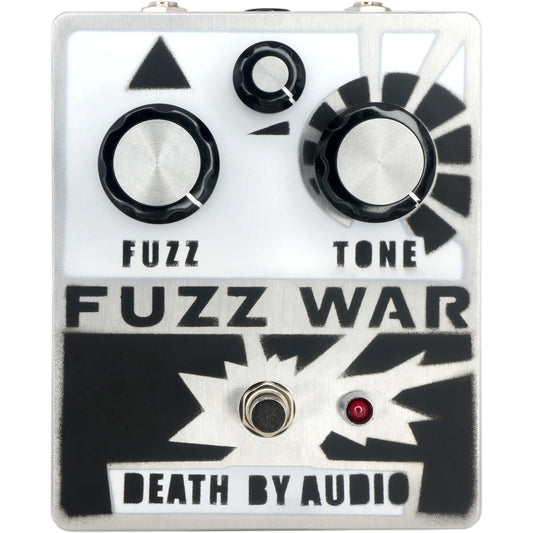
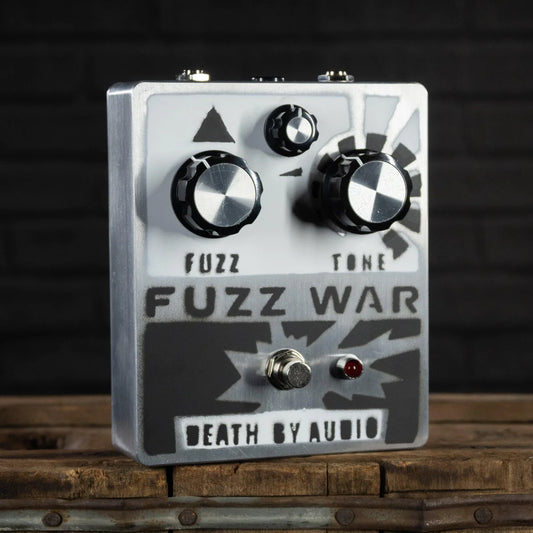 $27 off
$27 offFuzz War Death By Audio Pedal
2 reviewsRegular price $153.00Regular priceUnit price / per$180.00Sale price $153.00$27 off -
Mid-Fi Electronics Scrape Flutter Pedal
Regular price $150.00Regular priceUnit price / per -
Dirty Haggard Arachnid Pedal
1 reviewRegular price $135.00Regular priceUnit price / per -
Dirty Haggard Vanilla Sex Pedal
3 reviewsRegular price $135.00Regular priceUnit price / per -
Smirmoor Corpse Forge Pedal
No reviewsRegular price $249.00Regular priceUnit price / per -
Carl Martin Greg Howe's Lick Box Pedal
1 reviewRegular price $279.00Regular priceUnit price / per$349.00Sale price $279.00$70 off -
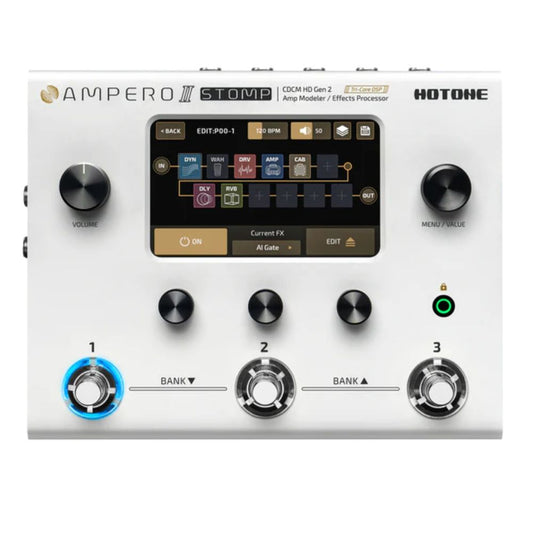
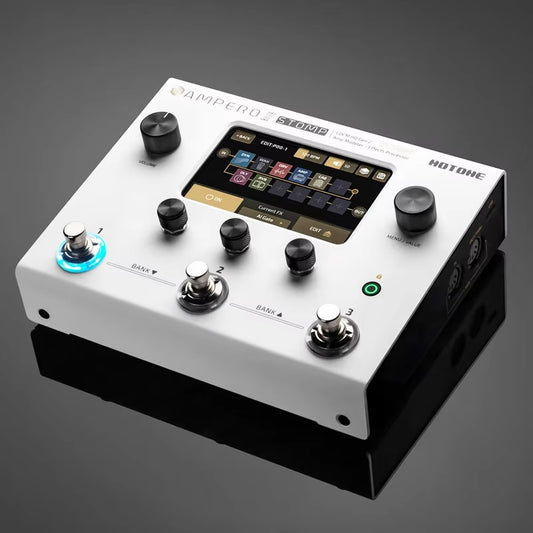 Sold out
Sold outHotone Audio Ampero II Stomp Pedal
No reviewsRegular price $499.99Regular priceUnit price / per -
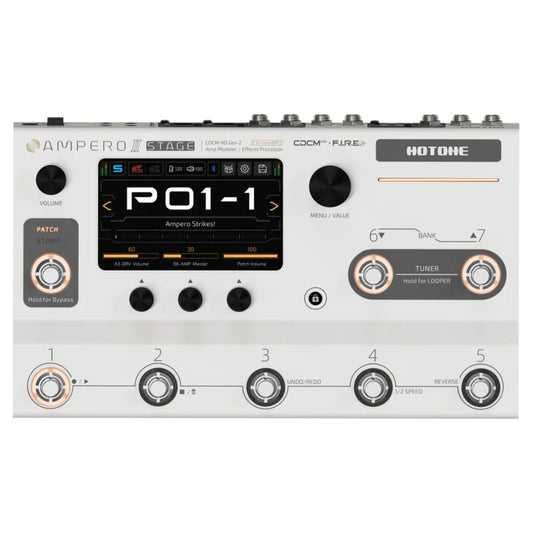
 Sold out
Sold outHotone Audio Ampero II Stage Pedal
No reviewsRegular price $699.99Regular priceUnit price / per -
Warm Audio ODD Box Pedal V1
No reviewsRegular price $129.00Regular priceUnit price / per -
Warm Audio Warmdrive Pedal
1 reviewRegular price $149.00Regular priceUnit price / per -
BLAMMO! Blues Blaster Pedal
No reviewsRegular price $154.99Regular priceUnit price / per -
BearFoot FX Bumble Bee Pedal
No reviewsRegular price $189.00Regular priceUnit price / per -
BearFoot FX Honey Bee Pedal
No reviewsRegular price $179.00Regular priceUnit price / per -
Joe Gore Porkolator Distortion Pedal
1 reviewRegular price $179.00Regular priceUnit price / per -
Joe Gore Gross Distortion Pedal
No reviewsRegular price $289.00Regular priceUnit price / per -
Dirty Haggard Ugly Trash Pedal
1 reviewRegular price $135.00Regular priceUnit price / per -
Demedash Effects 112+ Preamp Driver Pedal
1 reviewRegular price $225.00Regular priceUnit price / per -
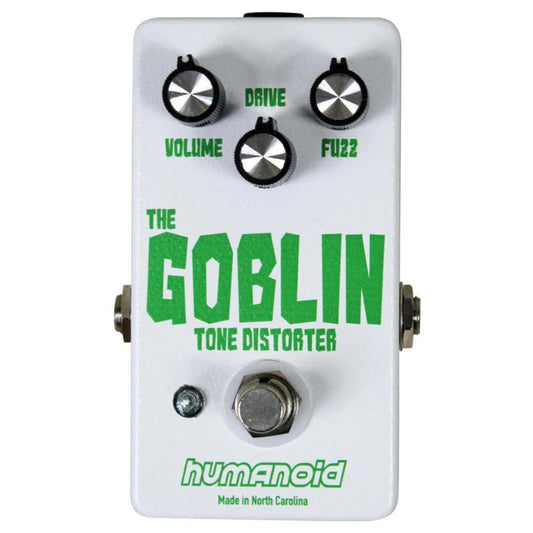
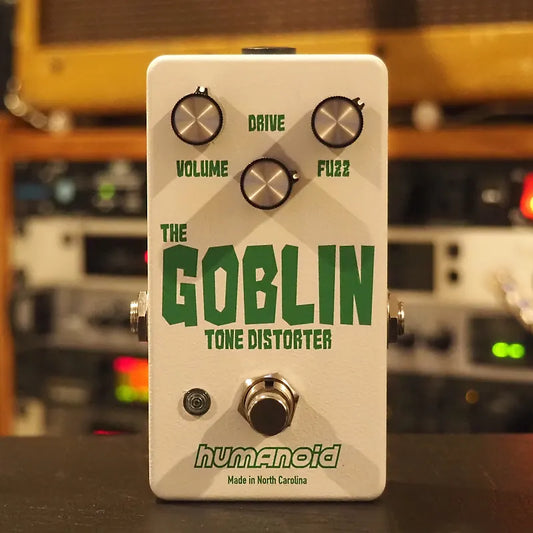 Sold out
Sold outHumanoid FX Goblin Pedal
1 reviewRegular price $129.00Regular priceUnit price / per$139.00Sale price $129.00Sold out -
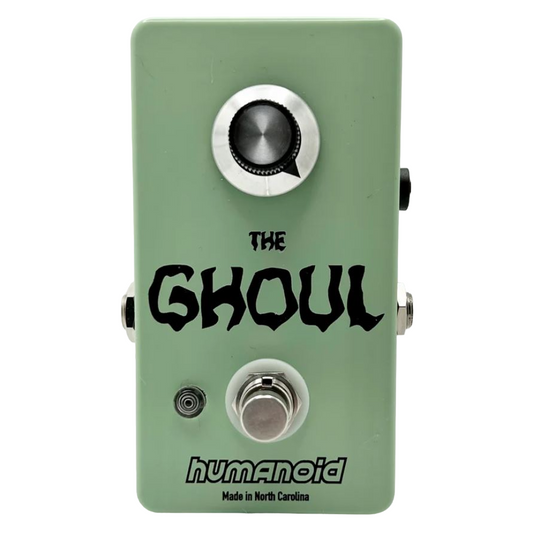
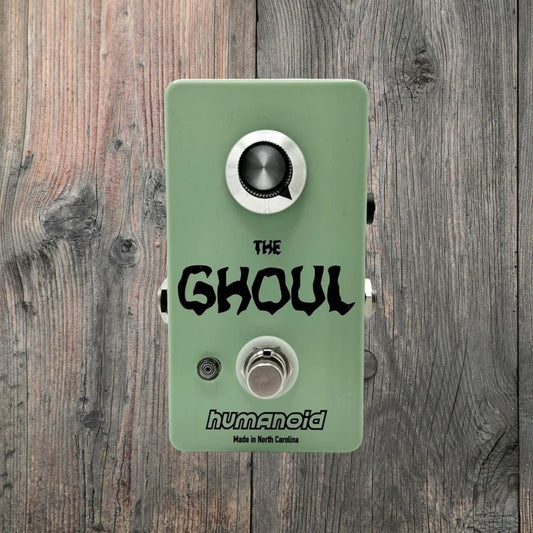 Sold out
Sold outHumanoid FX Ghoul Pedal
1 reviewRegular price $119.00Regular priceUnit price / per$129.00Sale price $119.00Sold out
Collection: Distortion Pedals
What does a Distortion Pedal do?
If you want to create intense, crunchy guitar tones, you must have a distortion pedal in your rig.
Distortion pedals intentionally overload an amplifier’s components to get that well-known distorted sound. These effect pedals alter your guitar’s sound by boosting the signal’s gain until it clips and distorts, creating harmonic overtones and compression that result in that signature aggressive tone. Playing around with the distortion pedal’s controls offers various levels of intensity that affect your guitar output’s texture, sustain, and character.
The usual control knobs of distortion pedals are the gain, volume, and tone. Some modern pedal versions even feature parameters for EQ shaping or a built-in noise gate, allowing you to manipulate your distorted tone further.
History of the Distortion Pedal
From as early as the 1960s, musicians were already experimenting with ways to create “fuzzy” tones with their guitars. Musicians back then like guitarist Link Wray achieved the distorted tone by puncturing his guitar amplifiers to get that gritty, raw tone.
By 1962, the Maestro FZ-1 was created to encapsulate this distorted tone into an effect pedal. The most famous use of this first commercially available distortion pedal was in the song “Satisfaction” by The Rolling Stones. The '70s and '80s saw significant advancements in distortion pedals, especially with well-known pedals such as the Boss DS-1 and Pro Co Rat.
Throughout the decades, millions of distortion pedals have been used in various records. This helped revolutionize music by providing consistent and controllable distortion, which forever changed the sonic landscape of all genres.
Who uses Distortion Pedals?
Distortion pedals are used by musicians across various music genres with different purposes in mind. These are widely used in metal, rock, alternative, and other music genres.
Rock legends like Jimi Hendrix, Tony Iommi, and Jimmy Page incorporate distortion pedals to create their signature crunchy and aggressive guitar tones. Meanwhile, punk bands keep distortion pedals in their rigs to achieve the raw and energetic tones they have in their records.
Blues guitarists, on the other hand, use these effect pedals to make their solos grittier, making them stand out in the mix. Even indie and alternative bands like Alvvays and Arctic Monkeys employ distortion to add texture and depth to their music. This vast variety of musicians using distortion pedals proves how versatile this guitar pedal is for any genre of music.
Why You Need a Distortion Pedal
A distortion pedal is a useful tool to add intensity to any instrument, allowing you to achieve tones that are hard-hitting, gritty, and sustain-heavy.
The guitar effect’s versatility lets you play it as light as a clean overdrive or as dirty as a broken-sounding amplifier. It’s invaluable for creating sustain, adding texture, and enhancing your overall impact during a performance or recording. This makes distortion pedals a need on your pedal board no matter the genre you play.
Whether you’re aiming for a tinge of crunch or an in-your-face roaring tone, distortion pedals are a must-have for musicians aiming to expand their sonic territory.
Where to Buy Distortion Pedals
If you’re looking to purchase your first distortion pedal or another one to stack with the rest of your rig, we’ve got you. At DeathCloud, we carry a massive catalog of distortion pedals from several different brands. We guarantee you a hassle-free experience when you purchase your next distortion pedal.
